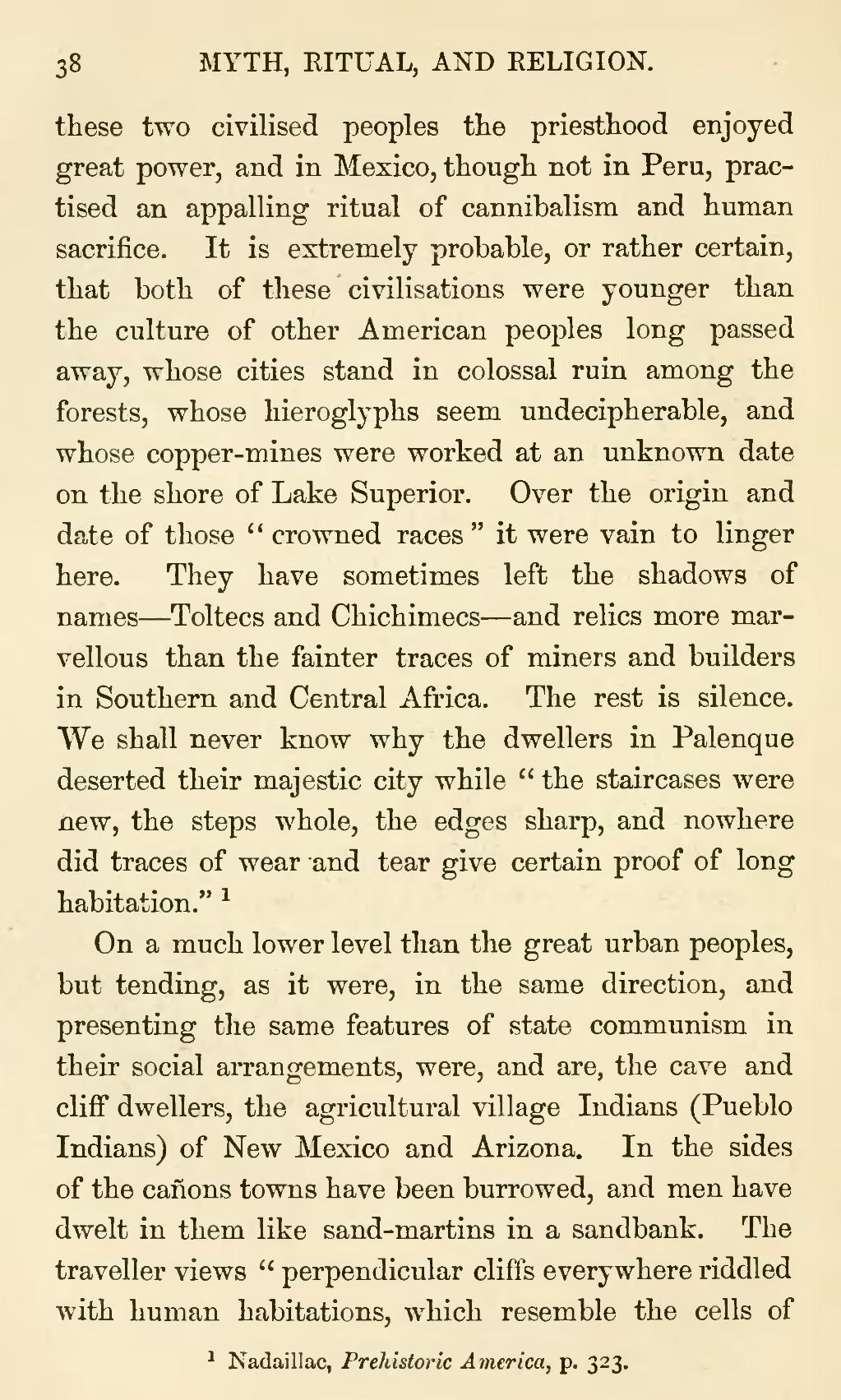these two civilised peoples the priesthood enjoyed great power, and in Mexico, though not in Peru, practised an appalling ritual of cannibalism and human sacrifice. It is extremely probable, or rather certain, that both of these civilisations were younger than the culture of other American peoples long passed away, whose cities stand in colossal ruin among the forests, whose hieroglyphs seem undecipherable, and whose copper-mines were worked at an unknown date on the shore of Lake Superior. Over the origin and date of those "crowned races" it were vain to linger here. They have sometimes left the shadows of names—Toltecs and Chichimecs—and relics more marvellous than the fainter traces of miners and builders in Southern and Central Africa. The rest is silence. We shall never know why the dwellers in Palenque deserted their majestic city while "the staircases were new, the steps whole, the edges sharp, and nowhere did traces of wear and tear give certain proof of long habitation."[1]
On a much lower level than the great urban peoples, but tending, as it were, in the same direction, and presenting the same features of state communism in their social arrangements, were, and are, the cave and cliff dwellers, the agricultural village Indians (Pueblo Indians) of New Mexico and Arizona. In the sides of the cañons towns have been burrowed, and men have dwelt in them like sand-martins in a sandbank. The traveller views "perpendicular cliffs everywhere riddled with human habitations, which resemble the cells of
- ↑ Nadaillac, Prehistoric America, p. 323.
